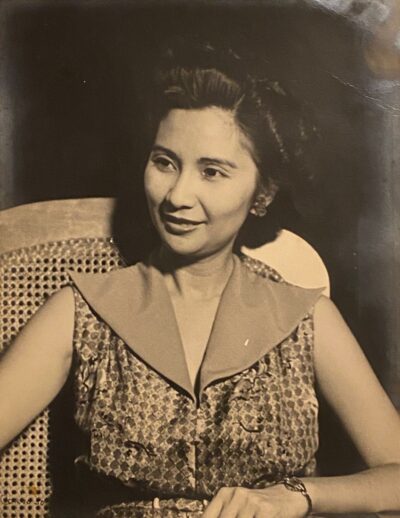
by Renato Redentor Constantino
It’s been nine years since Letizia Roxas Constantino passed away on 27 June 2016. But the memory of her life, and how and why she lived it to the fullest—it’s not only intact; we are determined to ensure it flourishes.
The exhibit, Letizia: A Life In Letters, is just one among many initiatives we have in store. The launch this August of a special hardbound edition of The Philippines: A Past Revisited, to mark the 50th anniversary since the book was published, is another. Renato wrote the book with Letizia, and how and why they did so is explained in a new introduction that comes with the book, along with a host of other lovely features.
When someone is called a writer, we tend to think of a novelist, a poet, or a journalist. Indeed, over so many decades Letizia wrote and edited countless books and analytical articles for newspapers and magazines. But it was letters to family, friends, and self, that she wrote most, in the style she preferred: with brevity, clarity, and grace.
Letizia’s craft, as her friend, the feminist scholar Inday Ofreneo, described, might be called feminine writing, something all of us can learn, re-learn, and integrate in our lives. Especially men.
Not all writing is meant for publication, and I suspect this covers even most diaries around the world that were later published as books. Most who keep journals as well as records of notable occasions and the mundane, and those who write letters to loved ones, rarely do so for the public’s eye.
The archives of our founders is quite extensive and there is more than enough material to publish, requiring only, of course, the painstaking process of reading, fermentation, curation, and distillation.
Speeches, manuscripts, handwritten notations, letters – love letters galore – as well as photographs, period-specific artifacts such as American and fascist propaganda along with permits of passage handed out during the Japanese Occupation, vinyl records from the 1950s and 1960s, classified Philippine and U.S. intelligence reports, reminders, recipes, and concertos, books read, and letters, letters, letters once more: there is so much to work on.
Public access to the exhibit Letizia: A Life In Letters, when anyone could walk in and enjoy at the Linangan Gallery of the Constantino Foundation, ended last May 30. But we had to respond a ton of requests to keep it open.
And so we’ve had numerous visitors schedule appointments to experience what many have seen. Most likely we’ll keep the exhibit open till end of July, maybe even in August, as we are now managing weekly appointments. We hope the public will understand why we prefer appointments requested a week in advance, with three choices in terms of days and times preferred. We just want to make sure an officer of the foundation is around to guide visitors.
Some might get lucky, like Nanette and Tony Fernandez, who were surprised to find out the designated guide for their scheduled appointment was Karmina Constantino-Torres, journalist and granddaughter of Letizia, and KC to her many fans. Tony, whose father he said used to walk with Letizia, was formerly with a UN development team based in Nagoya while Nanette previously taught at the Ateneo. Tony told Karmina it was his birthday two days before they dropped by the gallery and they wanted to do something different to celebrate, hence the visit. He said he also played the piano and was inspired to do his own recording after hearing Letizia on the piano as they browsed the displays.
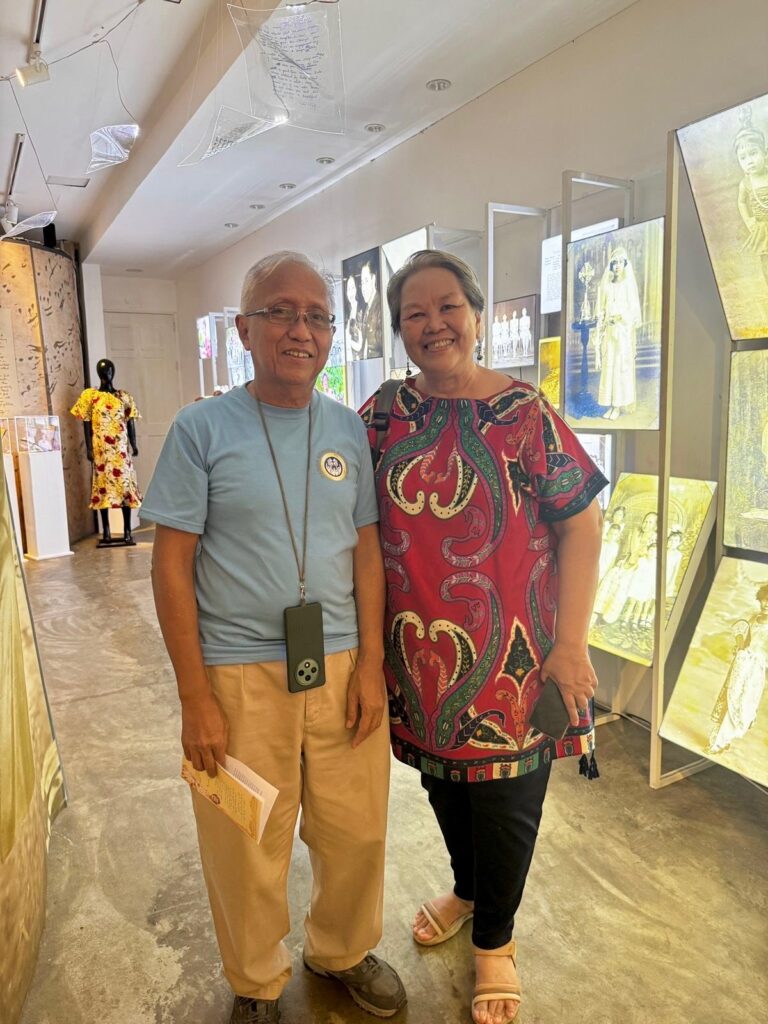
Tony and Nanette Fernandez, who marked Tony’s birthday two days before their visit. Tony said he wanted to do something different to celebrate his birthday.
Another exhibit visitor, Sol Victorioso, was surprised. Sol works with an NGO the foundation has great affections for, SALIGAN, which does developmental legal work for the marginalized, disadvantaged, and exploited sectors. While she only got me as her guide, just before she left my sister happened to drop by to say hello. Sol said she was one of The Constants, which is what followers of Karmina call themselves. She and Karmina were certainly delighted to be together even briefly.
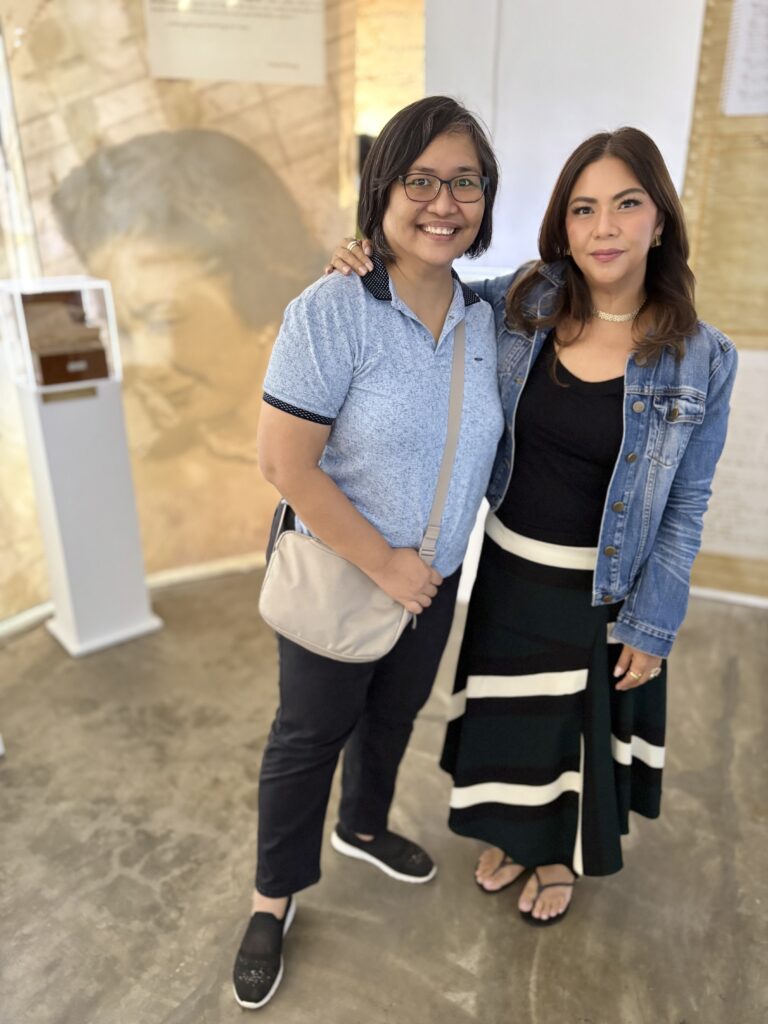
Sol Victorioso of SALIGAN with the journalist Karmina Constantino-Torres.
A week later the historian Bernard Karganilla came over for a second visit, with Lakan Uhay Alegre, son of a writer whose work I’m most fond of – the wonderful Edilberto Alegre. Bernard, Lakan, and I drew up the beginning of activities we hope to do together in August – like the launching of the 50th anniversary edition of A Past Revisited in Manila as well as in Tacloban, with a group Lakan is supporting, the Leyte-Samar Heritage Society.
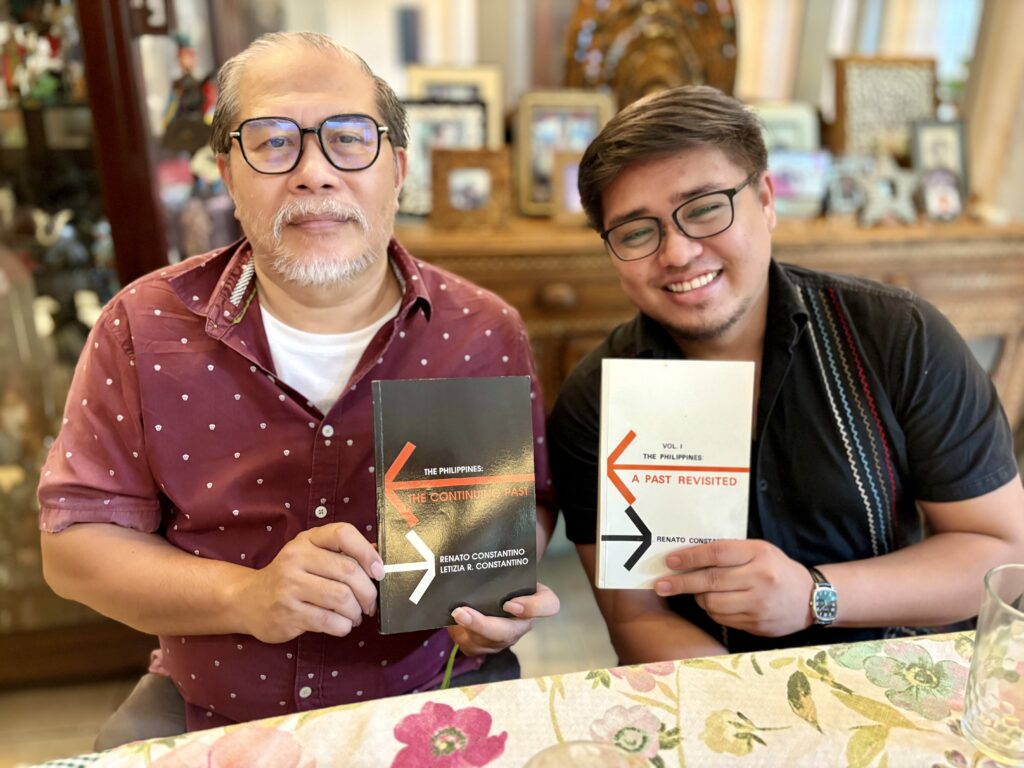
Prof. Bernard Karganilla with Lakan Uhay Alegre of the Leyte-Samar Heritage Society.
Last Wednesday, we enjoyed the visit of Nor Gonzales, who was joined by Josil Gonzales, Vilma and Dennis Medina, Raymond Tan (son of the esteemed historian Samuel Tan), and Reuben Muaña. They were from different schools and backgrounds, but they were all part of the same church group.
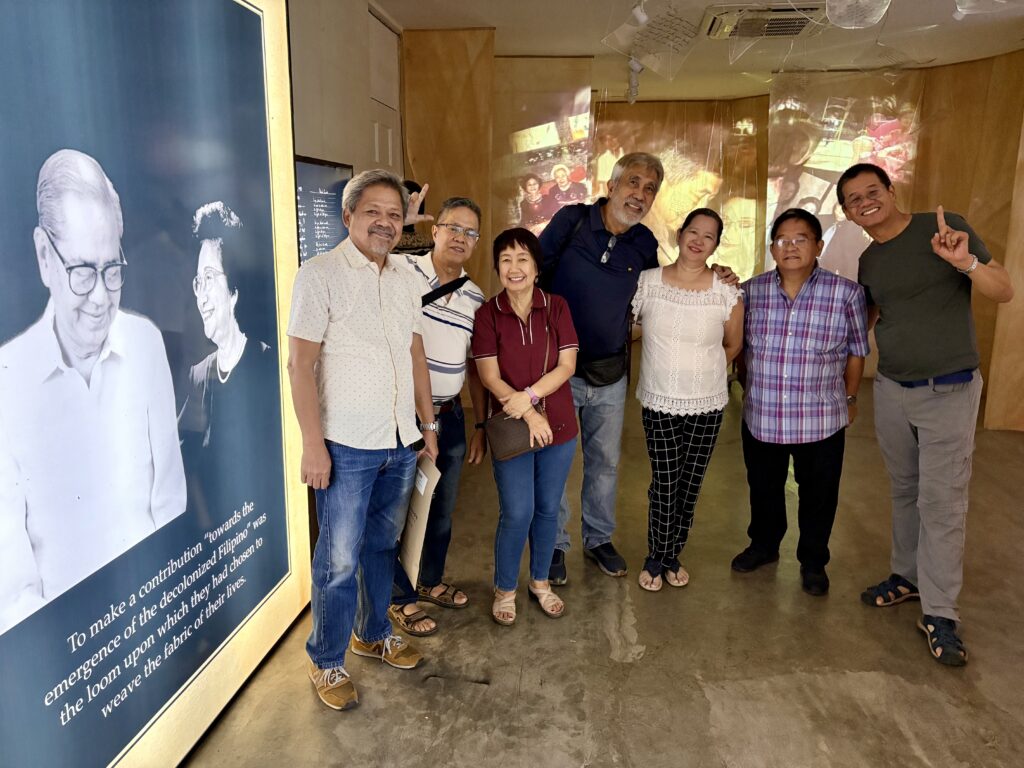
Nor Gonzales in white with the Laban sign, with friends from their church group.
We had a lively discussion as they pondered over displays and asked questions and shared observations. They knew of Renato Constantino and were all eager to know more about Letizia. They found out about the exhibit through the column of Ambeth Ocampo.
Everyone agreed as they walked out of the foundation’s compound that our people need even more reminders about the past, so they can get more involved and develop a stronger sense of agency and desire to act together, and two elements that Letizia would support strongly as well—hope and faith, in very big doses.
And hope and faith gets brighter on this day as we greet happy birthday to Lourdes Letizia – Tizia to family and friends – the youngest child of Karmina, born in 2020, on 27 June, the same day Letizia passed on. Tizia is named after her great grandmother, Letizia, as well as her lola, the writer named Lourdes, “Dudi” to friends and family and mommy to me and my three sisters.
The author is a grandson of Letizia Roxas Constantino and the managing director of the Constantino Foundation.

